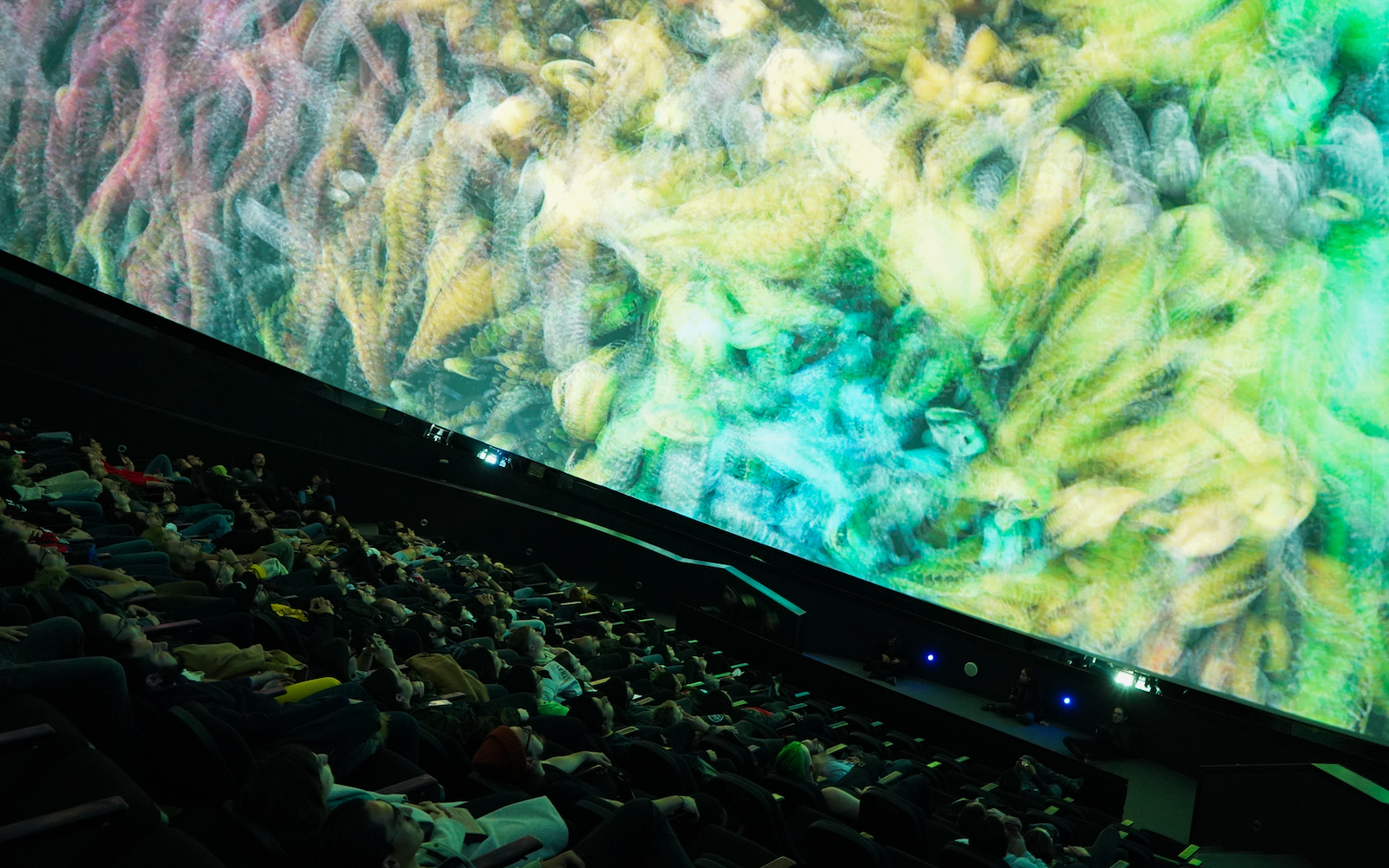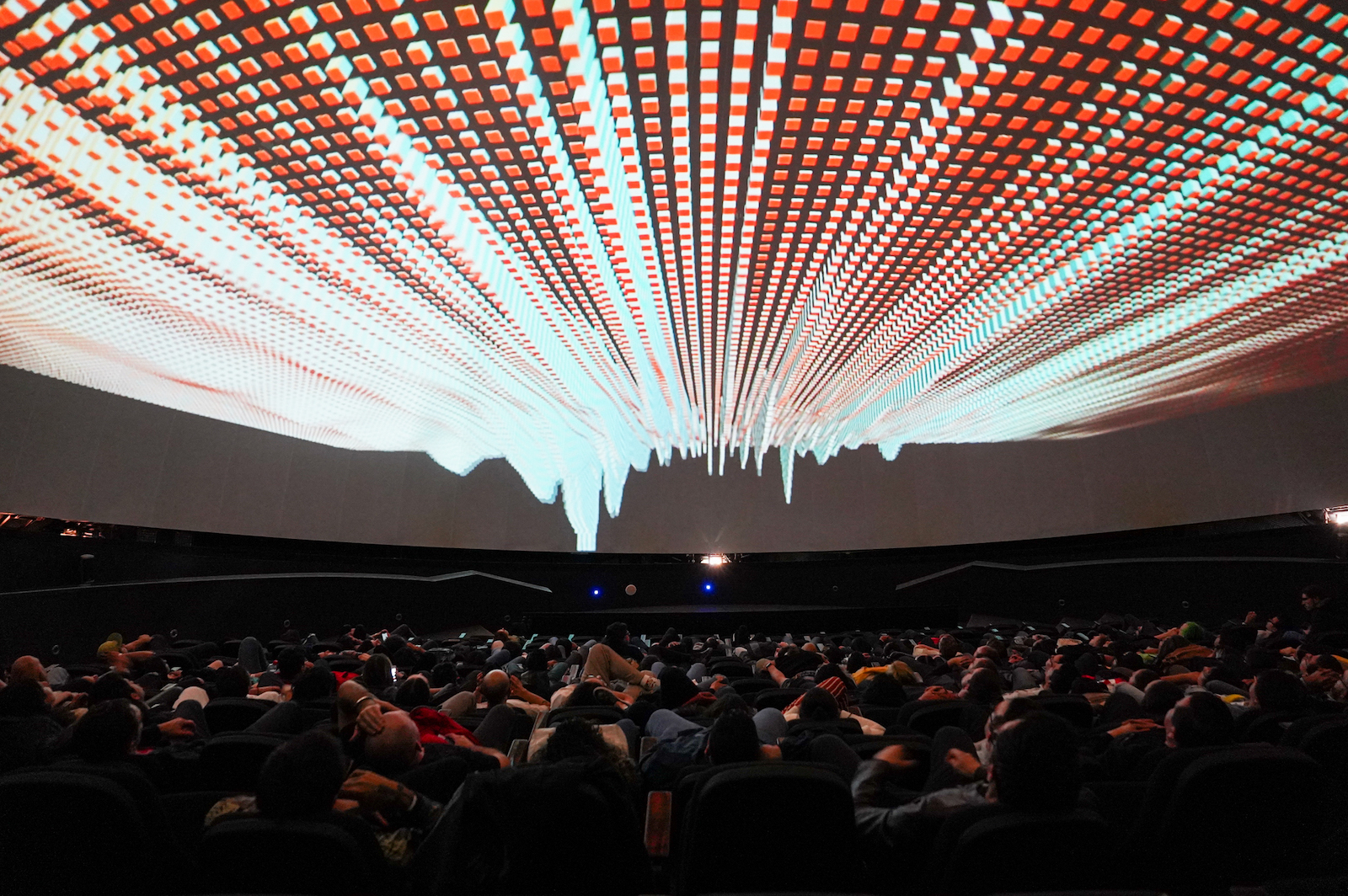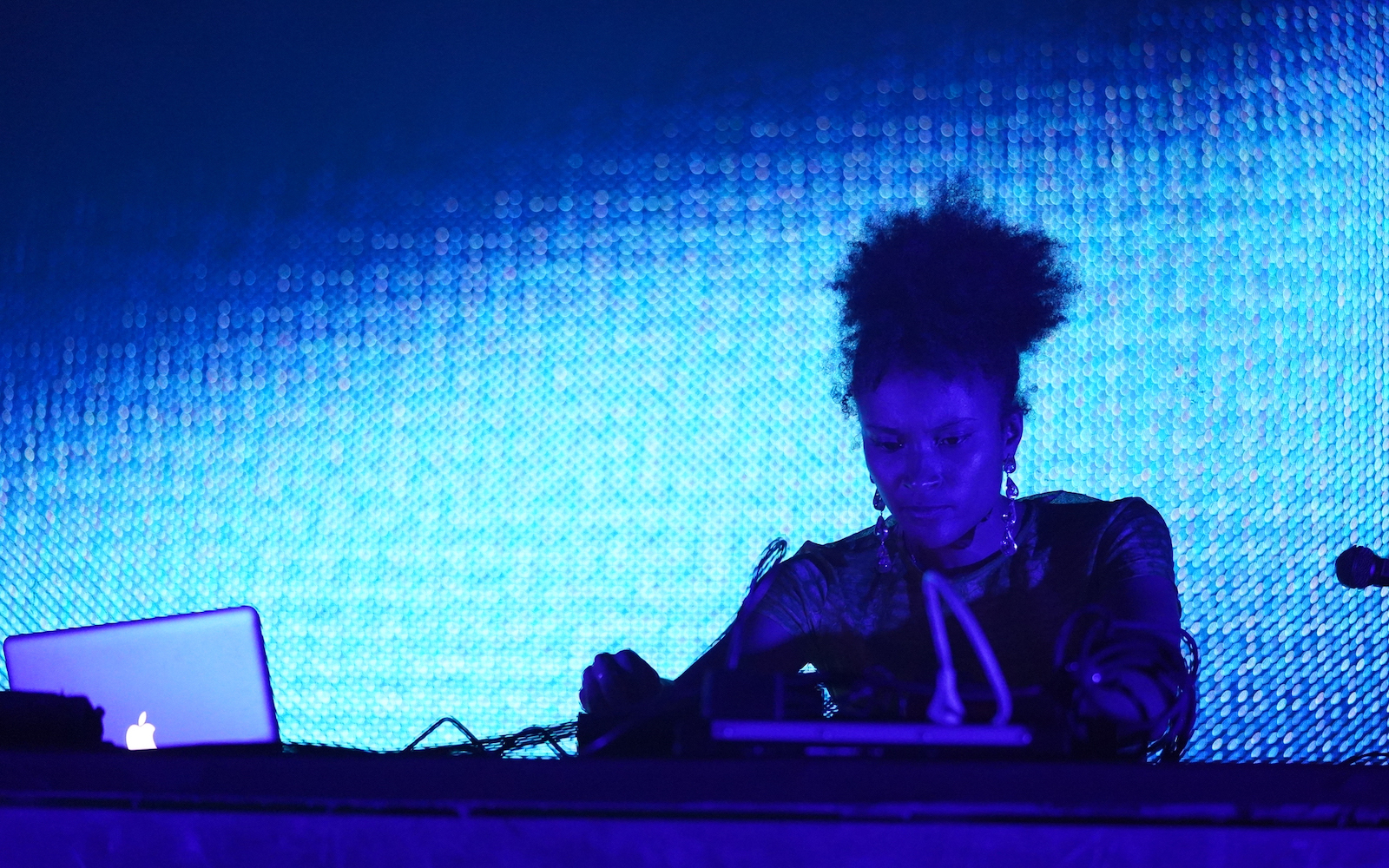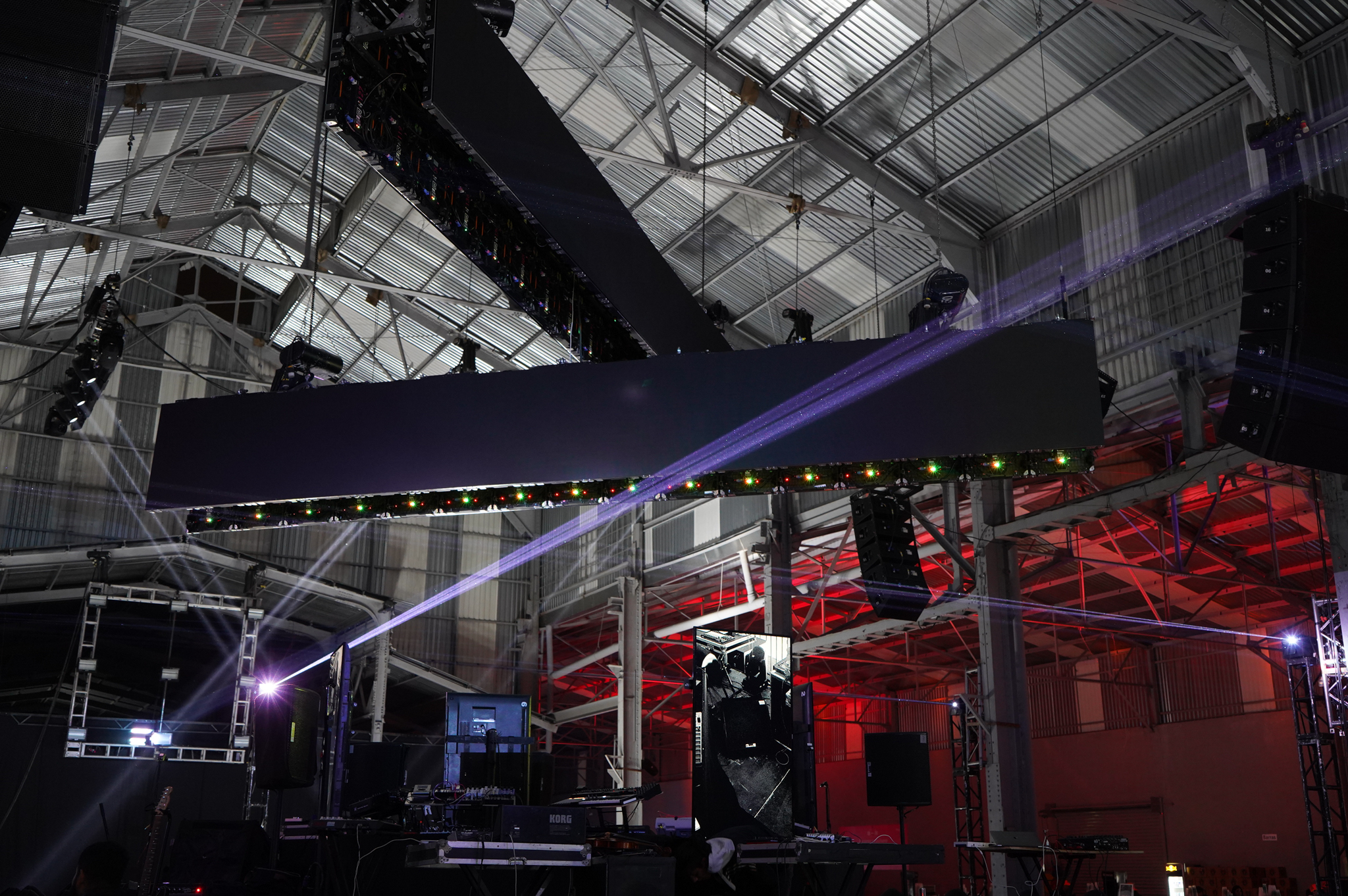Photo credits /
Max Guzman - Lead (Skalar)
Diego Figueroa - All others
MUTEK MX 2019: Five Key Performances
- PublishedNov 28, 2019
- Words
- Matt McDermott travels to Mexico City for one of Latin America's oldest and best-loved electronic festivals.
- Share
- During my stay in Mexico City for MUTEK MX, I was often handed—or sent via WhatsApp—flyers for an unofficial party run by one of the capital's many crews. "I feel [Mexico City] has all the ingredients to be a healthy scene in the future," said MUTEK MX's artistic director, Damián Romero, in Resident Advisor's 2015 documentary about the local scene. That future, evidenced by the whirr of activity within Mexico City's small clubs and underground activities, is upon us.
This is in no small part due to Mexico City's increasing popularity as a destination for expats, who are drawn to cheap rent and cheaper living in neighborhoods like Roma and La Condesa. On a night out at intimate clubs like Yu Yu, you're likely to hear English being spoken. During my time at MUTEK MX's various venues—Casa MUTEK, a beautiful, Spanish mission-style structure in Condesa used for panels and workshops, or Fábrica, the hulking former steel factory north of the city used for the festival's main club nights—I met musicians and artists from New York, Copenhagen and Montreal who had relocated to Mexico City, lured in by its wide-open, artistic potential.
So where does that leave MUTEK MX? The Mexican arm of one of the world's strongest electronic music brands has two jobs—not only to present the signature MUTEK mix of live performance, audiovisual art and emerging technologies, but also to catalyze a local scene coming into its own.
Here are five key performances from MUTEK MX 2019.
Fennesz & Ali M. Demirel Now in its 16th year, MUTEK MX moved its weekend Nocturne events to Fábrica in 2017, immediately following a devastating earthquake. Initially, the post-industrial space felt cavernous, but this year the team divided its various rooms in a clever manner. Sala A, the main stage, was situated in the center of the building's largest space. Sala B was tucked away on the other side of a massive throughway. And Sala C, hosting most of the local and experimental acts, was off to the right of the main stage, directly out of the blast zone of its towering speakers (more on that later). Sala B's Friday night programming was packed to the gills with marquee experimental artists, beginning with Tim Hecker & The Konoyo Ensemble and ending with a wrenching performance from Vessel & Pedro Maia. The audience dutifully turned out for this power block—it was often hard to get within 100 feet of the stage. Luckily, I managed to secure a spot up front for Fennesz, the legendary Austrian laptop artist and guitarist. At over 110 decibels, the pulsing subs that introduced Agora highlight "In My Room" were a visceral experience. His long-form, granular take on psychedelic drone was perfectly complimented by Ali M. Demirel's slowly zoomed footage of unusual geographic features. By the time Fennesz reached for his guitar, filling the room with resonant chords, we had already achieved transcendent lift-off.
 Aïsha Devi After Caterina Barbieri's set of ecstatic arpeggios, the night's most natural performer took the stage at Sala B. While acts like Barbieri and Hecker were shrouded in fog or studiously attended to their modular setups, Aïsha Devi alternated between dialing in Ableton and radically engaging the crowd. Nothing from Devi's latest album, DNA Feelings, could have prepared me for the live onslaught, which began with slow, punishing beats and disconnected rave stabs that felt like a mix of Justin Broadrick's heaviness and Lorenzo Senni's trance reconstructions. (I later spotted Devi wearing a jacket emblazoned with the logo from Senni's erstwhile Stargate project.) Devi, marshaling the heaving crowd with her remarkable voice, switched between loud and quiet, fast and slow, eventually working up to near-gabber tempo. She overran her hour-long set time, blowing kisses to the crowd and thanking them for their energy. As the sound engineer turned off her microphone, the audience screamed for more.
Aïsha Devi After Caterina Barbieri's set of ecstatic arpeggios, the night's most natural performer took the stage at Sala B. While acts like Barbieri and Hecker were shrouded in fog or studiously attended to their modular setups, Aïsha Devi alternated between dialing in Ableton and radically engaging the crowd. Nothing from Devi's latest album, DNA Feelings, could have prepared me for the live onslaught, which began with slow, punishing beats and disconnected rave stabs that felt like a mix of Justin Broadrick's heaviness and Lorenzo Senni's trance reconstructions. (I later spotted Devi wearing a jacket emblazoned with the logo from Senni's erstwhile Stargate project.) Devi, marshaling the heaving crowd with her remarkable voice, switched between loud and quiet, fast and slow, eventually working up to near-gabber tempo. She overran her hour-long set time, blowing kisses to the crowd and thanking them for their energy. As the sound engineer turned off her microphone, the audience screamed for more. Circle Of Live Circle Of Live, an improvisatory dance music collective with an alternating cast of live hardware experts, was booked for a six-hour headline set at Nocturne Two on Saturday night, perhaps the logical conclusion of MUTEK's commitment to live performance. For the first few hours, the proceedings were led by the project's founder, Sebastian Mullaert, and Dorisburg, who manned a modular setup. Âme's Frank Wiedemann looked on from the side of the in-the-round stage. Mathew Jonson, felled by food poisoning, never materialized. Circle Of Live anchored their experiments with a relentless tech house rhythm. The concept reminded me of the Grateful Dead's improvisatory flights—it's about the journey, maaan. OK, so the music they're playing right now isn't terribly interesting but wait 30 minutes and you might be in seriously heady, psychedelic territory. Over the course of six hours, the trio moved between the sublime and the pedestrian, ending with a pretty, guitar-like melody that Jerry Garcia might have played.
Circle Of Live Circle Of Live, an improvisatory dance music collective with an alternating cast of live hardware experts, was booked for a six-hour headline set at Nocturne Two on Saturday night, perhaps the logical conclusion of MUTEK's commitment to live performance. For the first few hours, the proceedings were led by the project's founder, Sebastian Mullaert, and Dorisburg, who manned a modular setup. Âme's Frank Wiedemann looked on from the side of the in-the-round stage. Mathew Jonson, felled by food poisoning, never materialized. Circle Of Live anchored their experiments with a relentless tech house rhythm. The concept reminded me of the Grateful Dead's improvisatory flights—it's about the journey, maaan. OK, so the music they're playing right now isn't terribly interesting but wait 30 minutes and you might be in seriously heady, psychedelic territory. Over the course of six hours, the trio moved between the sublime and the pedestrian, ending with a pretty, guitar-like melody that Jerry Garcia might have played. Maria W Horn I was pleasantly surprised to spot Maria W Horn, the Swedish experimentalist and XKatedral cofounder, on the bill. Before her set, she told me her audiovisual show consisted of two strobing LED lights. She delivered MUTEK's most dynamic performance, oscillating between thrilling noise and sub-bass violence, and more subtle vibrations—funereal organ work along the lines of Kali Malone or Ellen Arkbro—which easily bled into minimalist sine wave experiments. Unfortunately, during these quiet sections, Circle Of Live's beats were easily audible in Sala C. Still, Horn's alien frequencies pleased a small and devoted crowd of freaks. A man inexplicably wearing a luchador mask lurked to the left of the stage. Another in sunglasses stood blissful and motionless against the strobes.
Maria W Horn I was pleasantly surprised to spot Maria W Horn, the Swedish experimentalist and XKatedral cofounder, on the bill. Before her set, she told me her audiovisual show consisted of two strobing LED lights. She delivered MUTEK's most dynamic performance, oscillating between thrilling noise and sub-bass violence, and more subtle vibrations—funereal organ work along the lines of Kali Malone or Ellen Arkbro—which easily bled into minimalist sine wave experiments. Unfortunately, during these quiet sections, Circle Of Live's beats were easily audible in Sala C. Still, Horn's alien frequencies pleased a small and devoted crowd of freaks. A man inexplicably wearing a luchador mask lurked to the left of the stage. Another in sunglasses stood blissful and motionless against the strobes.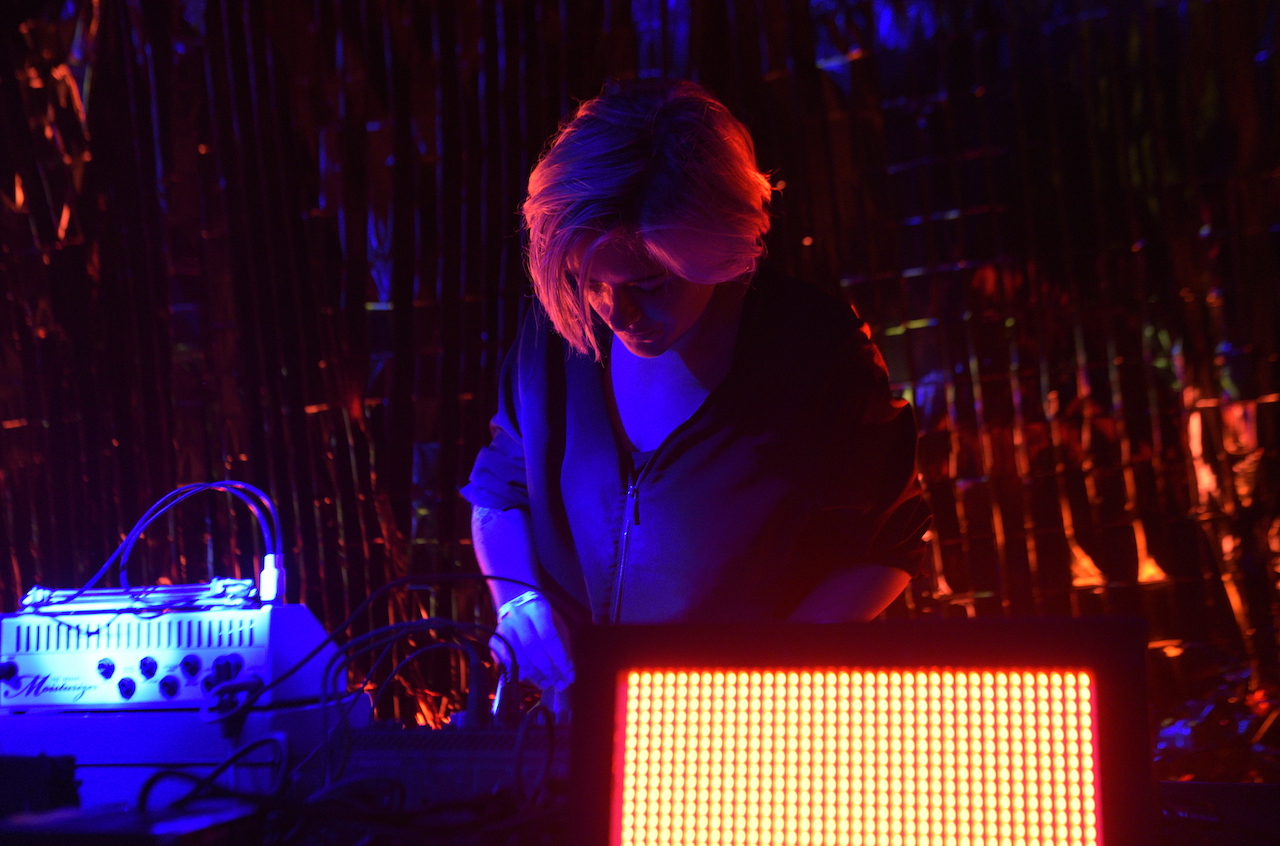 KOI Early on Saturday night, I was struck by KOI's live set. A mix of ambient and subtle techno beats, the Mexico City-based artist's sound contained slow-moving textural shifts and layered atmospheres that put me in mind of the Chain Reaction catalogue. I caught up with her after her set and asked her about her influences and the samples she used (her own field recordings). She told me she listened not only to techno but also to cumbia and danzón, the slow, Cuban-style dance music, hinting at a rich middle ground between MUTEK's avant-garde electronics and Mexico City's internalized rhythms. Resident Advisor hosted Sala B at Fábrica on the Saturday night of MUTEK MX.
KOI Early on Saturday night, I was struck by KOI's live set. A mix of ambient and subtle techno beats, the Mexico City-based artist's sound contained slow-moving textural shifts and layered atmospheres that put me in mind of the Chain Reaction catalogue. I caught up with her after her set and asked her about her influences and the samples she used (her own field recordings). She told me she listened not only to techno but also to cumbia and danzón, the slow, Cuban-style dance music, hinting at a rich middle ground between MUTEK's avant-garde electronics and Mexico City's internalized rhythms. Resident Advisor hosted Sala B at Fábrica on the Saturday night of MUTEK MX.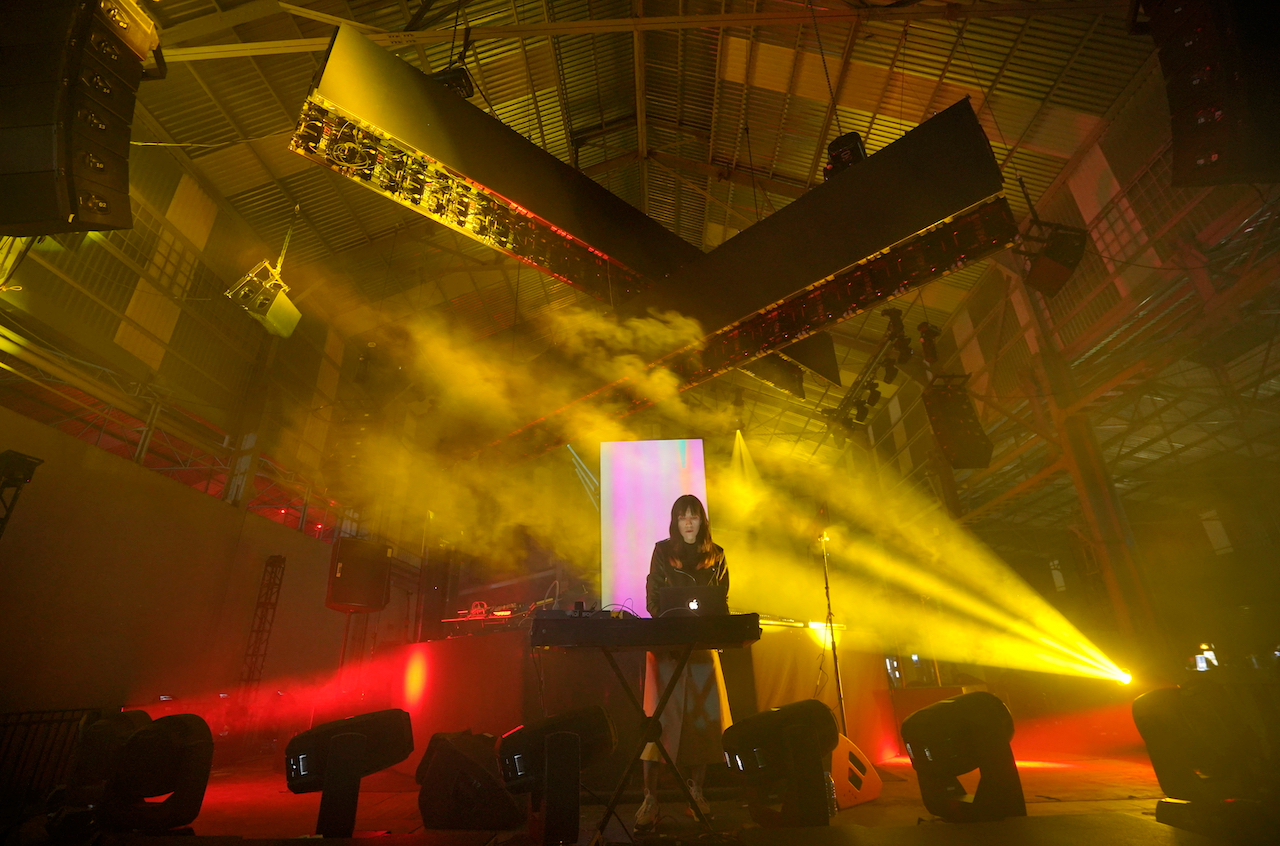 0303
0303